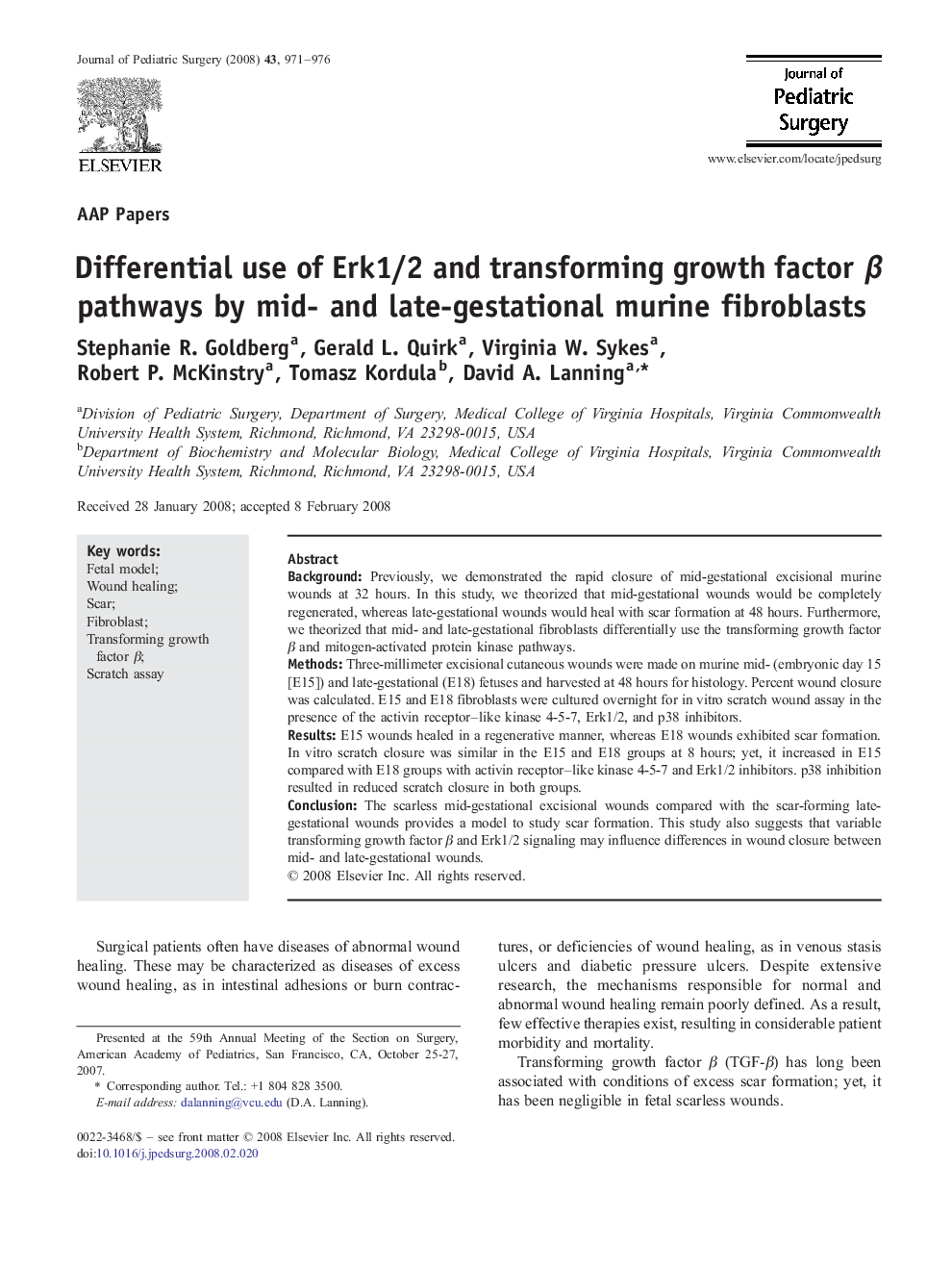| Article ID | Journal | Published Year | Pages | File Type |
|---|---|---|---|---|
| 4158545 | Journal of Pediatric Surgery | 2008 | 6 Pages |
BackgroundPreviously, we demonstrated the rapid closure of mid-gestational excisional murine wounds at 32 hours. In this study, we theorized that mid-gestational wounds would be completely regenerated, whereas late-gestational wounds would heal with scar formation at 48 hours. Furthermore, we theorized that mid- and late-gestational fibroblasts differentially use the transforming growth factor β and mitogen-activated protein kinase pathways.MethodsThree-millimeter excisional cutaneous wounds were made on murine mid- (embryonic day 15 [E15]) and late-gestational (E18) fetuses and harvested at 48 hours for histology. Percent wound closure was calculated. E15 and E18 fibroblasts were cultured overnight for in vitro scratch wound assay in the presence of the activin receptor–like kinase 4-5-7, Erk1/2, and p38 inhibitors.ResultsE15 wounds healed in a regenerative manner, whereas E18 wounds exhibited scar formation. In vitro scratch closure was similar in the E15 and E18 groups at 8 hours; yet, it increased in E15 compared with E18 groups with activin receptor–like kinase 4-5-7 and Erk1/2 inhibitors. p38 inhibition resulted in reduced scratch closure in both groups.ConclusionThe scarless mid-gestational excisional wounds compared with the scar-forming late-gestational wounds provides a model to study scar formation. This study also suggests that variable transforming growth factor β and Erk1/2 signaling may influence differences in wound closure between mid- and late-gestational wounds.
